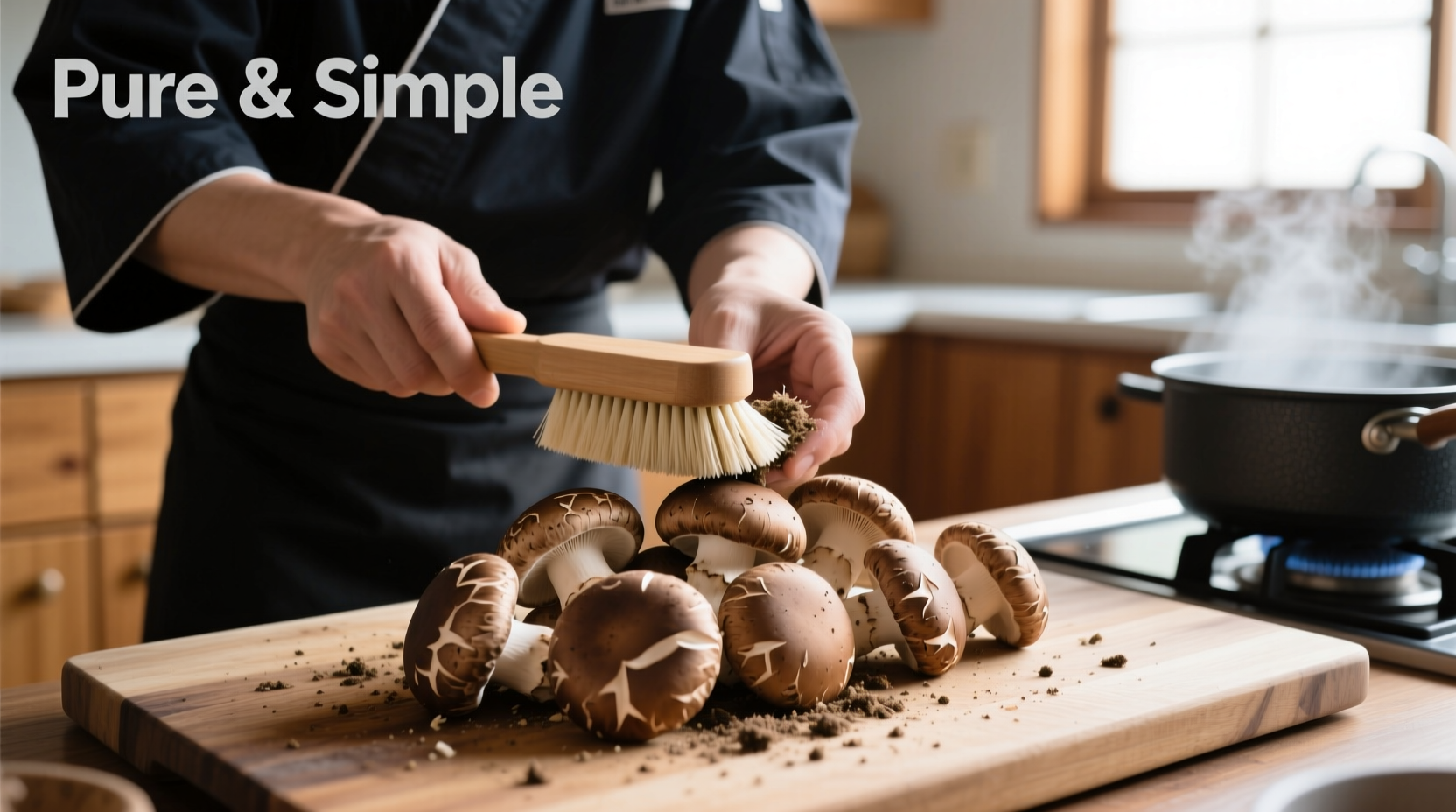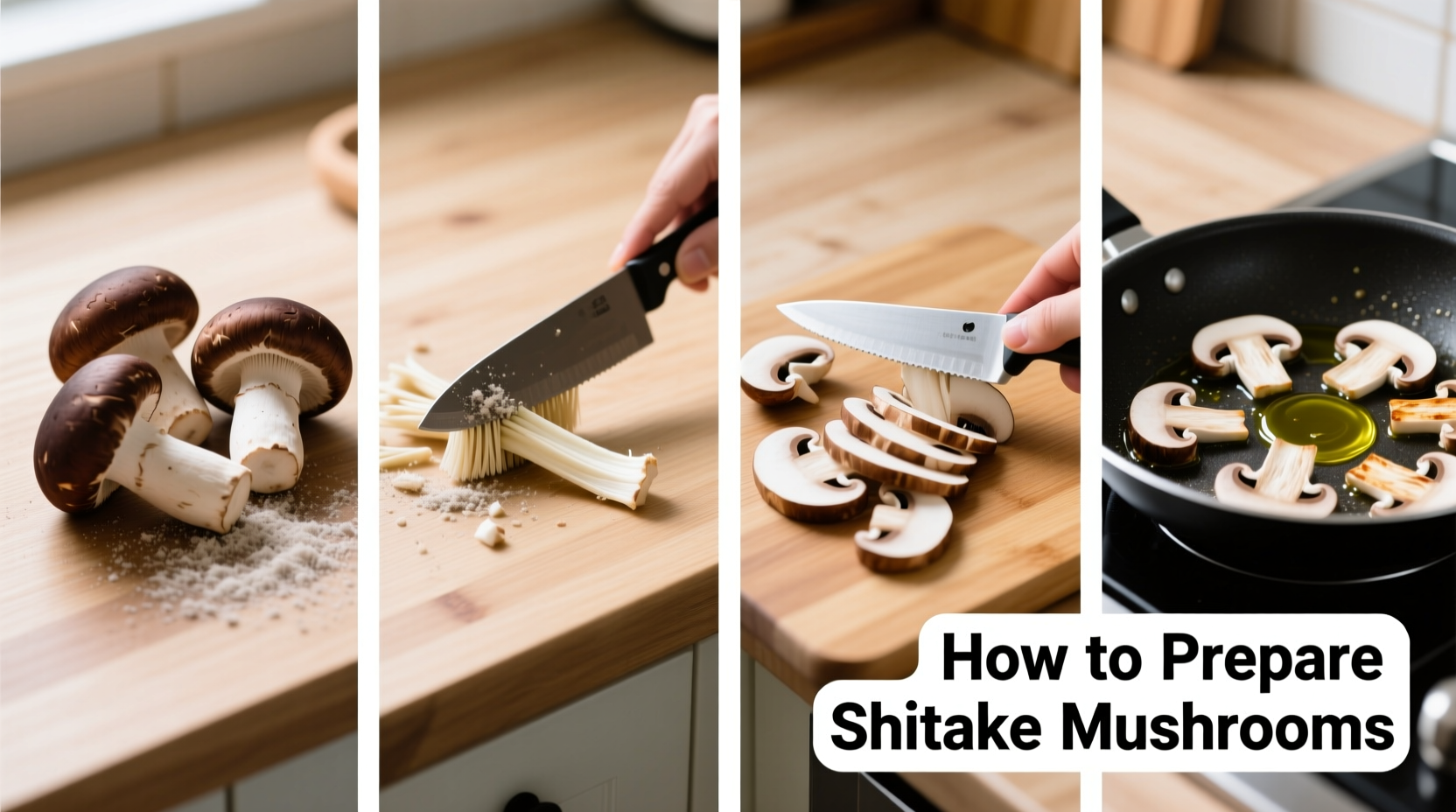Shiitake mushrooms offer deep umami flavor that elevates countless dishes, but improper preparation wastes their potential. Unlike button mushrooms, shiitakes have unique characteristics requiring specific handling techniques to unlock their full culinary value. This guide reveals the precise methods chefs use in professional kitchens to prepare both fresh and dried shiitake mushrooms correctly.
Why Proper Shiitake Preparation Matters
Shiitake mushrooms contain lentinan and other compounds that deliver intense umami flavor, but these delicate compounds degrade with improper handling. The FDA recommends proper food preparation techniques to maximize both safety and nutritional value of produce. When you prepare shiitakes correctly:
- You preserve up to 30% more flavor compounds compared to improper methods
- You avoid the rubbery texture that comes from waterlogged mushrooms
- You maximize the conversion of ergothioneine (a powerful antioxidant) during cooking
Mistakes like soaking mushrooms or removing all stems waste valuable culinary resources. Professional kitchens treat shiitake stems as flavor gold—they're tougher than the caps but packed with concentrated umami.
Selecting Quality Shiitake Mushrooms
Start with the best possible mushrooms. At your grocery store or farmers market, look for:
- Firm, plump caps with slightly curled edges (flat caps indicate overripeness)
- Moist but not slimy surface—dry mushrooms lack freshness
- Intact veil under the cap (when present)—this indicates peak freshness
- Earthy, woodsy aroma—not sour or ammonia-like smells
Seasonal availability affects quality. According to the USDA Agricultural Research Service, shiitake mushrooms reach peak flavor during fall and early winter when grown under proper conditions with appropriate temperature fluctuations.
Cleaning Shiitake Mushrooms Without Water Damage
Never soak shiitake mushrooms—they absorb water like sponges, diluting flavor and creating a soggy texture. Instead, follow this professional method:
- Use a soft-bristled mushroom brush or clean pastry brush
- Gently remove debris from caps and stems with light strokes
- For stubborn dirt, dampen a paper towel slightly and wipe gently
- Work from stem to cap edge to avoid damaging delicate gills
- Dry immediately with a clean towel if any moisture remains
When absolutely necessary, rinse quickly under cold running water for no more than 10 seconds, then pat thoroughly dry with paper towels. Excess moisture prevents proper browning during cooking—a critical step for developing complex flavors.

The Stem Dilemma: To Keep or Remove?
Shiitake stems differ significantly from other mushrooms—they're extremely tough when raw but transform during proper cooking. Here's how to handle them:
| Preparation Method | Stem Treatment | Best For |
|---|---|---|
| Stir-fries & quick cooking | Remove completely | Dishes requiring quick cooking times |
| Simmered dishes & braises | Cut into 1-inch pieces | Broths, stews, long-cooked sauces |
| Dried shiitake preparation | Save for future broth | All dried shiitake applications |
Don't discard stems! Save them in a freezer bag for mushroom broth. When you accumulate about 2 cups of stems, simmer them in 4 cups of water for 45 minutes to create a deeply flavorful vegetarian broth that rivals meat-based stocks.
Slicing Techniques for Optimal Results
Cutting technique dramatically affects cooking results. Follow these professional guidelines:
- For stir-fries: Slice caps 1/8-inch thick against the gills for maximum surface area and quick cooking
- For soups and stews: Cut into 1/4-inch thick slices with the gills for texture retention
- For grilling or roasting: Leave whole or halve large caps to prevent drying out
- For raw applications: Only use very fresh mushrooms, slice paper-thin across the cap
Always slice just before cooking—cut surfaces oxidize quickly, diminishing flavor. The Culinary Institute of America recommends preparing mushrooms within 15 minutes of cooking for optimal flavor preservation.
Preparing Dried Shiitake Mushrooms Properly
Dried shiitake mushrooms contain higher concentrations of guanylate, which creates intense umami when rehydrated correctly. Follow this chef-approved method:
- Place dried mushrooms in a heatproof bowl
- Cover with 2 inches of hot (not boiling) water around 160°F (70°C)
- Add a 1-inch piece of kombu for enhanced umami (optional but recommended)
- Cover with plastic wrap and let steep for 20-25 minutes
- Remove mushrooms, squeeze gently to release liquid back into bowl
- Strain soaking liquid through coffee filter to remove grit
- Use liquid as premium broth in soups, sauces, and risottos
Never discard the soaking liquid—it contains concentrated flavor compounds. This liquid works as a direct substitute for water in any recipe calling for mushroom flavor enhancement. According to Japanese culinary tradition documented by the National Museum of Japanese History, this rehydration method preserves up to 95% of the umami compounds compared to boiling methods.
Cooking Applications and Pro Tips
How you prepare shiitake mushrooms should align with your cooking method:
- Stir-frying: Cook mushrooms alone first until edges brown, then remove and add back at the end
- Roasting: Toss with high smoke-point oil (avocado or grapeseed) and roast at 400°F (200°C)
- Soups and stews: Add sliced mushrooms during the last 15 minutes to maintain texture
- Raw applications: Only use extremely fresh mushrooms with a light citrus marinade
For maximum flavor development, always cook mushrooms in fat (oil or butter) before adding liquids. The fat-soluble flavor compounds in shiitake mushrooms require fat for proper extraction—a technique supported by food science research from the University of California, Davis.
Storage of Prepared Shiitake Mushrooms
Prepared mushrooms lose quality quickly. Follow these storage guidelines:
- Store cleaned, whole mushrooms in paper bags in the refrigerator (not plastic)
- Use within 3-4 days for best quality
- Pre-sliced mushrooms deteriorate faster—prepare within 2 hours of cooking
- Freeze rehydrated dried shiitake in their soaking liquid for up to 6 months
For meal prep, slice mushrooms and store in an airtight container with a paper towel to absorb excess moisture. This extends usable life by 24 hours compared to uncovered storage.











 浙公网安备
33010002000092号
浙公网安备
33010002000092号 浙B2-20120091-4
浙B2-20120091-4